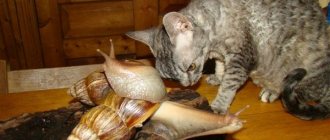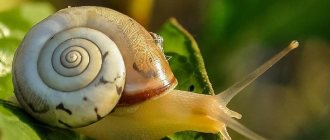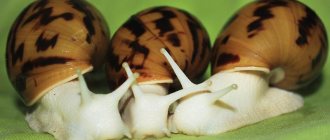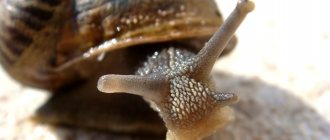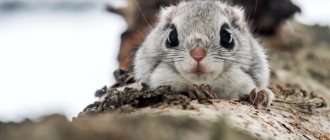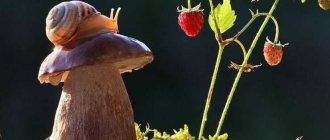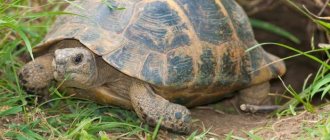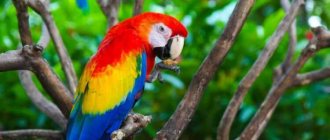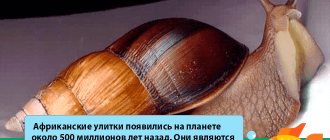Welcome to our website axatina.ru. Here you will find comprehensive information about wonderful pets, whose popularity is increasing every day. The site is small, but here you will find answers to almost all the questions asked by beginning snail breeders.
Attention! On the pages of the site we have hidden various interesting intellectual tests about snails, as well as some useful surprises for our users. Hurry up to find them.
And now we will get to know our pets a little better, find out what they look like, what structure they have, and also learn some interesting facts about Achatina.
What does Achatina look like?
The gastropod mollusks Achatina are indigenous to the African continent. They cannot be confused with anyone. These are real elephants among land gastropods. They can reach amazing sizes. In addition, these creatures are distinguished by a beautiful shell with numerous curls. They have many species and subspecies; each of them has its own characteristics in character, behavior, body and shell coloring. The body structure of all Achatina is the same and quite simple.
To put it very simply, each mollusk has:
- sink;
- head;
- body.
The most beautiful part of the snail is its large, beautiful, pointed shell. In it, the animal protects all its internal organs. The house can have different colors (depending on the type) and have several (8 to 9) curls. On the head of the mollusk there are two pairs of horns and a mouth. One pair of large upper horns forms small eyes at the end. The lower horns are the organs of smell.
Feel free to leave comments on the article and ask questions. The most interesting of them will appear in our FAQ section.
African clam in cooking
Residents of Africa, America and Southeast Asia used shellfish meat for food. Since the mid-19th century, Europeans have recognized snail meat as a delicacy. In Japan and France, Achatina is grown on special farms and eaten.
Achatina in cooking
Even the Romans and ancient Greeks, knowing about the dietary value of snails, recommended eating them. You can easily cook snail in your kitchen using our recipes.
100 g of snail meat contains 90 kcal.
Achatina meat contains micro- and macroelements, several essential amino acids, as well as vitamins A, B, E, etc. It treats rickets and tuberculosis, is useful for obesity and pregnancy, and eliminates the side effects of antibiotics on the body.
Structure and organs
Their anatomical structure is simpler than that of other animals, but their main advantage is their ability to quickly regenerate lost organs and tissues.
Internal structure of the cochlea:
| 1. Shell | 13. Puberty time |
| 2. Liver | 14. Penis |
| 3. Lung | 15. Vagina |
| 4. Anus | 16. Mucous gland |
| 5. Respiratory system | 17. Fallopian tube |
| 6. Eye | 18. Arrow pouch |
| 7. Tentacles | 19. Leg |
| 8. Cerebral ganglion | 20. Stomach |
| 9. Radula | 21. Kidney |
| 10. Mouth | 22. Mantle |
| 11. Croup | 23. Heart |
| 12. Salivary gland | 24. Efferent vessel |
Sink
The shell is based on calcium compounds and organic substances, so it is a reliable protection for the part of the body where the internal organs are concentrated. It also saves the animal from external enemies and drying out. The shell has a spiral shape and consists of 7 - 10 curls. The largest individuals can have up to 15 curls. Basically, the shell twists clockwise. Shells twisted in the opposite direction are very rare.
In humid areas, Achatina shells are thinner and more transparent. Individuals living in arid zones boast a heavy and durable shell.
Respiratory system
The animal has one lung, formed from the mantle cavity. At the edge of the shell there is a breathing hole through which it draws in air. Achatina can also breathe through the skin.
Heart
The cardiovascular system of gastropods includes:
- heart,
- open circulatory system.
The heart has developed muscular walls. Its job is to rhythmically pump blood into the blood vessels. The heart beats rhythmically and pumps blood with such force that it reaches the farthest parts of the body. The circulatory system of the heart has the left and right coronary arteries, which arise from the aorta and branch out to supply the heart with oxygen.
Digestive system
The digestive system includes:
- mouth;
- teeth;
- salivary glands;
- pharynx;
- esophagus;
- stomach;
- liver;
- intestines;
- anus.
Food enters the mouth, is ground, moistened with saliva and then through the pharynx and esophagus into the goiter, then into the small stomach. Passing through the intestines, it is finally digested. Remains of food are removed through the anus, which is located on the side under the sink.
Mouth and teeth
Food enters the mouth and is ground with a special “grater” - the radula, which consists of small teeth. They are arranged in a row of 100 pieces. It's amazing how many teeth a snail has - there are up to 25,000 of them!
In the photo: Achatina teeth under a microscope
The radula performs another role - the role of the tongue, pushing food into the pharynx.
Nervous system
The head contains a tiny brain. The nervous system of gastropods is of the scattered-nodular type and is controlled by the brain. The main nerve endings are located on the front of the animal's body, along the edges of the legs and soles.
The main sense organs controlled by the nervous system are:
- eyes;
- organs of touch,
- edges of the mantle.
Macro photo of Achatina
Propulsion system
The main part of the body outside the shell is divided into the leg and sole. These locomotor organs play the role of suction cups and help mollusks move on various surfaces. They also help animals sense the world around them. The sole secretes mucus, which smoothes out rough surfaces and makes walking smooth and painless. Without this mucus (a kind of lubricant), the snails would quickly injure their delicate bodies.
Anatomy of departments
The ear has 3 different sections that perform completely different functions:
- External - part of the auditory canal and auricle, which capture sounds.
- The middle one is located in the temporal bone and has 3 articular parts: the stirrup, the incus and the malleus, which transmit sounds further to the cochlea.
- Internal - consists of 2 sections: the cochlea (anterior labyrinth), which is responsible for hearing and the semicircular canals (posterior labyrinth), which is involved in maintaining body balance.
The cochlea (anterior labyrinth) contains special structures through which auditory signals are generated.
Sense organs
Eyes
On the head of Achatina there are two pairs of movable horns. The small beads at the tips of the upper horns are the eyes, the lower horns are the olfactory organs. The eyes distinguish the outlines of objects within 1 - 3 cm.
Snails navigate in space not only with the help of their blind eyes, but also with the help of light-sensitive body cells. They play an important role in determining the degree of illumination of surrounding objects. They don't like bright light. Therefore, they try to hide from the sun’s rays under snags, in foliage, or bury themselves in the ground.
Organs of touch and smell
An important role in the life of Achatina is played by small lower horns, which act as a nose. Without them, it is difficult for them to find food and assess the condition of the litter. Since the snail does not have hearing organs, these horns completely compensate for its absence. Also, at the tips of the tentacles of the sole and front of the body there are small tubercles that are able to recognize the smells, shape and structure of objects. Thus, snails can detect the smell of gasoline and acetone from 4 cm, and the smell of potential food from 2 meters.
Video
Ampularia. Apple snail.
How are ampoule Ch2 doing? How to treat a bad shell and other answers to questions from subscribers.
Apple snails ride on each other
What to feed (small ampularia)???
Dimensions
Achatina are considered the largest land snails.
Many people are interested in how big they can grow. Their eggs reach 5 mm in diameter. The hatched babies grow very quickly and are on average about 15 cm in length. In nature or in good conditions, very large specimens are found - up to 25 cm, while their shell can reach 30 cm. Table of snail growth by month:
| Month | Size |
| 1 month | 1 - 3 cm |
| 2 months | 2 - 7 cm |
| 3 months | 3 - 10 cm |
| 4 months | 4 - 10 cm |
| 5-12 months | 5 – 14 cm |
| 1 year | reach maximum growth and stop growing |
Functions
The main function of the anterior labyrinth is to transmit nerve signals that come from the middle ear to the brain.
Moreover, the aforementioned organ of Corti is very important in this process, since it is it that converts the primary sound signal. The sequence of this process is as follows.
- The sound impulse reaches the ear and hits the membrane of the eardrum. The membrane begins to vibrate from these impulses. These impulses are transmitted to the sound bones: the stirrup, anvil and hammer.
- These vibration waves cause the cilia of the hair cells in the organ of Corti to move, thereby irritating the plate that lies above them.
This whole process occurs in a matter of seconds, since all the organs that participate in this process work synchronously and at lightning speed from the beginning of a person’s life.
Behavior
All species of Achatina are nocturnal animals. During the day, they can crawl out only in damp, cloudy weather. They are able to remember their actions for one hour and return to the places where they found food.
Young individuals are more nimble and fearless, while older ones prefer to hide in secluded places and crawl out of the shelter only to search for food. Achatina perfectly recognizes its owner and reacts to him, freely crawling along his hands.
You can learn how to handle and care for these cute animals in our section Contents and Care.
Historical data
The habitat of Achatina is the equatorial part of East Africa. Not without human help they moved to Madagascar, Seychelles, India, and Sri Lanka. In Indochina, they spread throughout the entire territory in just 10 years.
Once in the United States, they managed to destroy most of Florida's farmland in a few months. Every effort was made to destroy them. Because of this, Achatina is prohibited from being brought into the United States and kept as pets. Violators of the ban face a five-year prison sentence and a huge fine.
India and Taiwan faced the same problems. Hindus destroy millions of snails every year. However, local residents of these countries began to eat them with pleasure, inventing various dishes. Achatina soup is popular in India as a healing remedy for lung diseases.
Owner reviews
Recently, it has become fashionable to keep various unusual pets at home, such as grape snails, which in nature parasitize various living plants, causing them significant harm. Being in captivity, such a mollusk can eat all kinds of vegetation, fruits and vegetables.
Interesting moment! There are no problems in terms of feeding a grape snail kept at home. They eat almost everything: bananas, pears, apples, pumpkins, carrots, cabbage, potatoes, etc.
Home care practice shows that drafts or strong winds can harm the snail, as they accelerate moisture loss. Despite this, excess humidity in their home negatively affects their life expectancy, since snails breathe air. The most optimal humidity level is about 80 percent. If you follow all the rules of care, then snails are little susceptible to negative influences. Basically, snails suffer from high temperatures or hypothermia, which is associated with violations of living conditions. One should also take into account the fact that low temperatures negatively affect the development and growth of these mollusks, inhibiting these processes. In case of overheating, the snails can be sprayed with cold water, and in case of hypothermia - with warm water, or the snails can be rubbed down, either cold or warm.
It is not recommended to keep snails that are different species together. Individuals who have reached one or one and a half years of age take part in the reproduction process. Grape snails feel great at home. You can pick them up and bathe them in this position. Since the mollusk does not require special care, they can be kept by people who do not have much free time, and in general their maintenance can be entrusted to children.
Interesting facts about snails
- Achatina can make sounds resembling a whistle or gurgle when air leaves the spiracle under high pressure. And this happens either from fear, or when the snail tries to hide.
- Achatina is a natural source of valuable protein. In Africa, they are sold on the market along with poultry and animal meat.
- Snails perfectly remember the way to the feeder, recognize their owner, rejoice and show interest in him. Therefore, Achatina is considered smart among gastropods.
- They drink not only with their mouths, but also with their body cells.
- Their noses are small horns with receptors on the outside. In other animals, the receptors are located inside the nose.
- The snails have 25,000 teeth in their mouths that look like sharp peaks.
- Their vision is very poor, they are able to distinguish light and shadow, as well as the outlines of objects at a distance of 1 cm from the eyes.
- Reproducing at tremendous speed, the voracious Achatina can destroy vast areas of farmland in just one season.
- Achatina can migrate in search of food within a radius of 30 meters. Old snails have a permanent shelter, while young ones “spend the night” in the first secluded place they come across.
- The largest specimen, caught in Africa in 1976, reached 37 cm in length and weighed 1 kg.
- The average speed of snails is 6 cm per minute.
Please rate this article:
